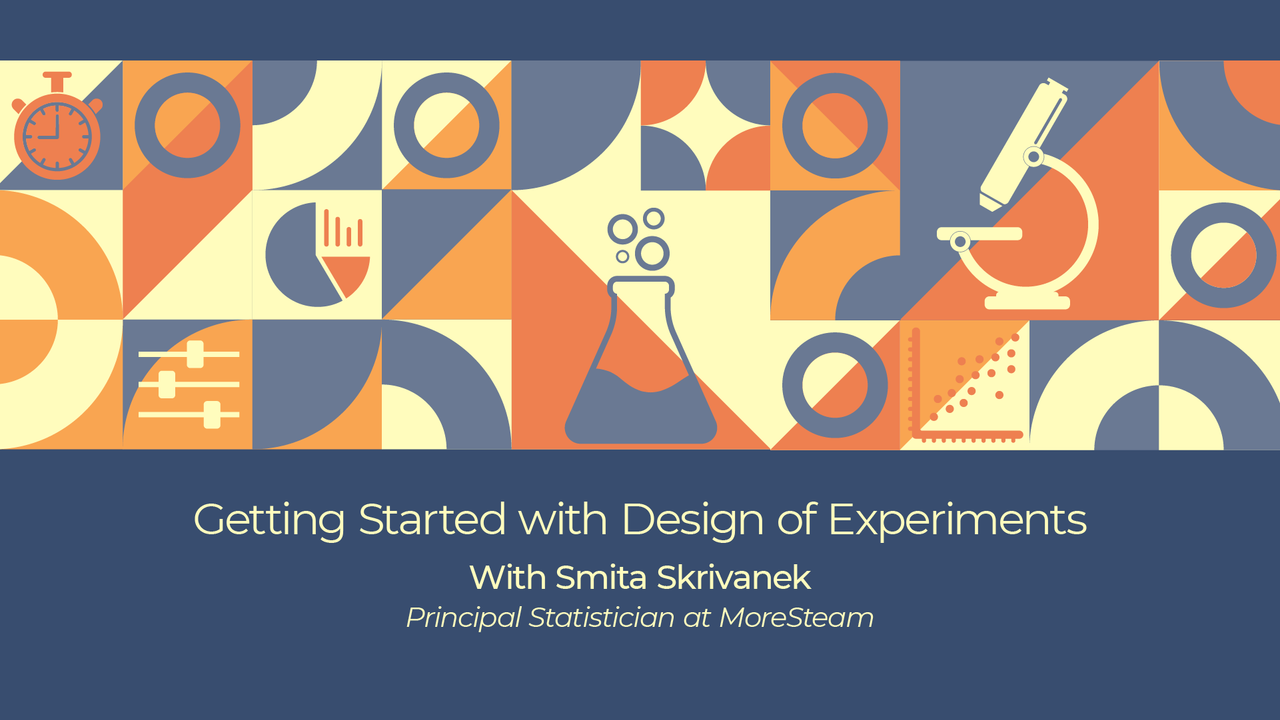
Getting Started with Design of Experiments: Part 2
DOE, or Design of Experiments, is a branch of applied statistics that uses planning, conducting, analyzing, and interpreting controlled tests to explain the variation of information under conditions hypothesized to reflect the variation. It’s a powerful data collection and analysis tool that investigates how different factors or variables affect an outcome or response of interest. It can help you:
- Identify critical factors influencing an outcome
- Optimize processes for improved efficiency and cost-effectiveness
- Minimize experimentation time and resources
- Make data-driven decisions with confidence
This two-part free webinar, hosted by MoreSteam’s Principal Statistician, Smita Skrivanek, will cover everything you need to know when getting started with DOE. She’ll answer critical questions like:
- Why use DOE?
- What’s the difference between OFAT and DOE?
- How do you set up an experimental design?
- What are the characteristics that make a good design?
Whether you’re a newcomer to Design of Experiments or looking to refresh your knowledge, this two-part series is the perfect opportunity to gain essential insights into DOE concepts and applications. It is highly recommended that you attend both sessions, as that will give you the most robust understanding of DOE.
In these sessions, we will:
- Give a solid foundational understanding of DOE: what it is, why use it, and how to conduct a DOE
- Walk through a simple full factorial example using EngineRoom
- Discuss the relationship between an experiment and a hypothesis test
- Provide in-depth explanations of DOE principles, like replication, blocking, and aliasing


Principal Statistician • MoreSteam
Smita Skrivanek was MoreSteam's first full-time employee on the payroll. Currently, she leads research and development for EngineRoom, including its patented hypothesis testing and DOE wizard elements. Throughout her tenure, she has been responsible for building curriculum, coaching, reviewing projects, and assisting students with their advanced statistical questions. Smita previously taught college-level Statistics courses.
Smita has a Masters in Statistics from The Ohio State University and an MBA from Indiana University Kelley School of Business.
